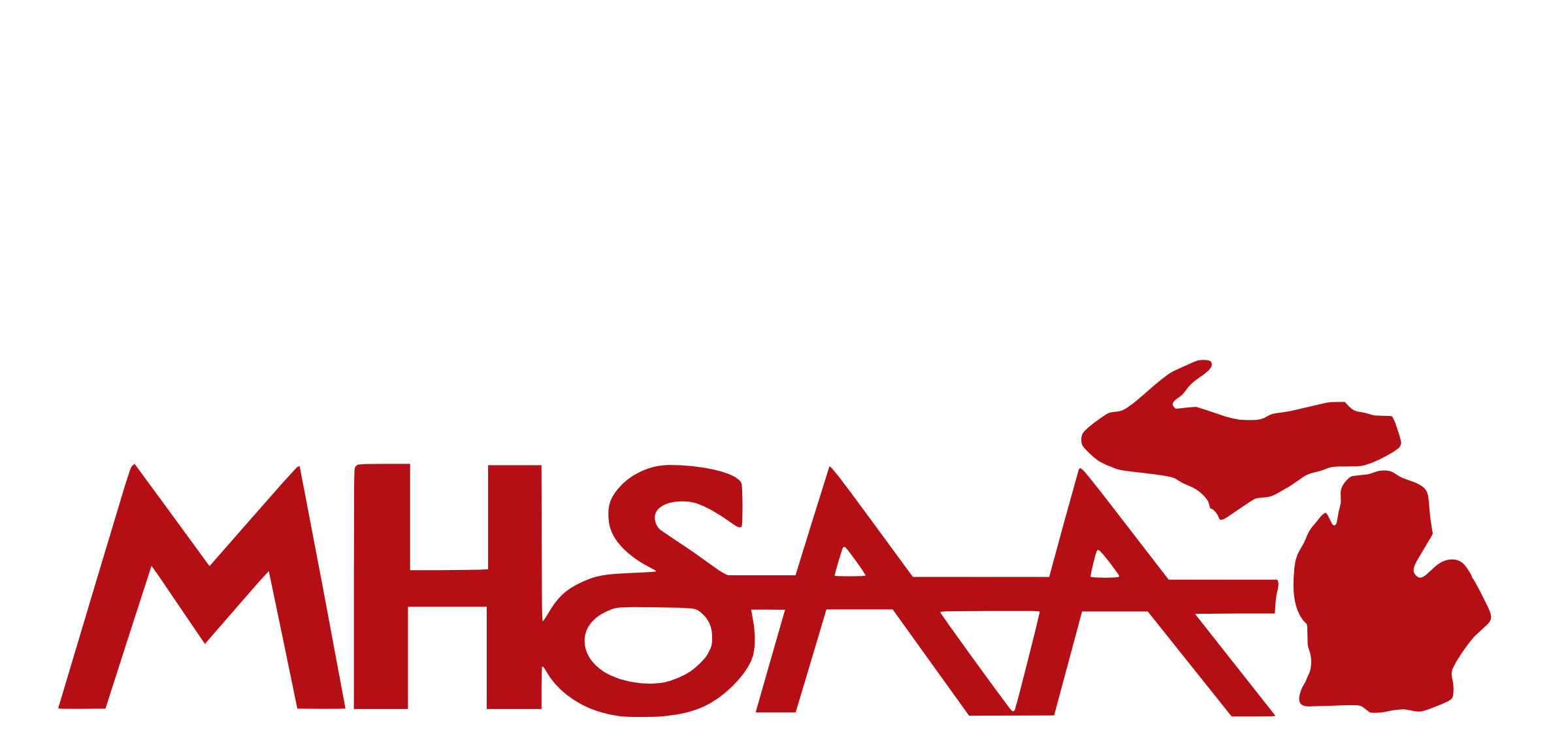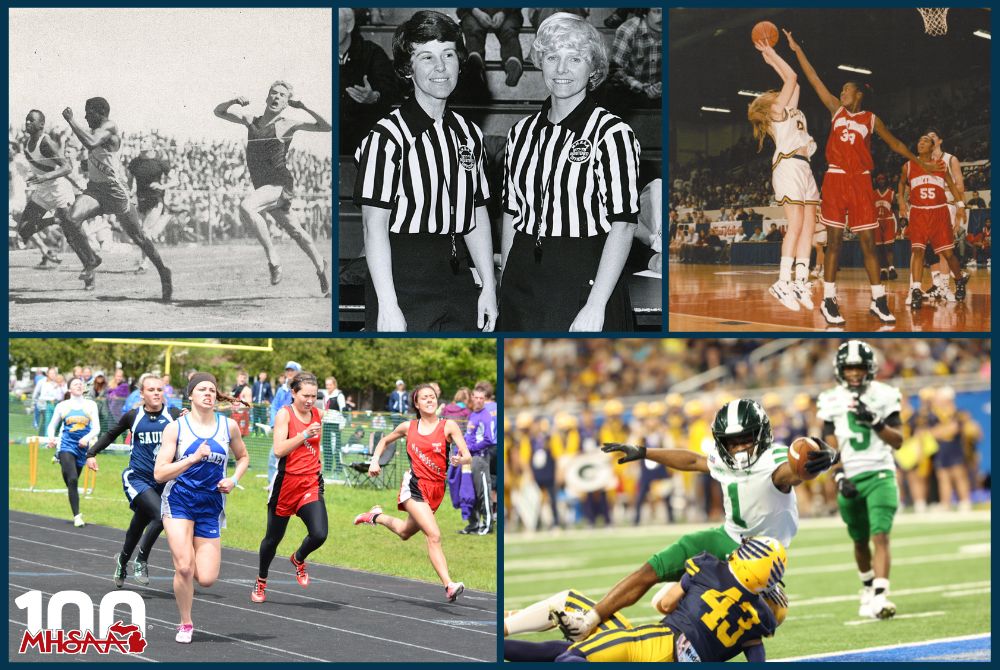
Century of School Sports: MHSAA Over Time
December 17, 2024
The Olympics in Paris have just completed. A presidential election was held in November. The information technology industry rolls out new products impacting everyday life for years to come. And, there was an MHSAA Representative Council Meeting in December.
The year is 1924.
History, indeed, repeats itself. Yet, each time it does, history is also made.
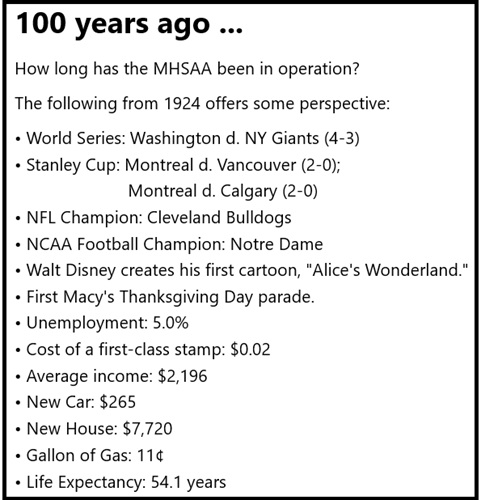 Johnny Weissmuller, later of Tarzan fame, won three swimming gold medals and a bronze medal in water polo at the VIII Olympiad. Calvin Coolidge defeated John W. Davis in the 1924 presidential election. International Business Machines Corp. took over a small company with sights set on becoming an international force, creating what we know as IBM that February.
Johnny Weissmuller, later of Tarzan fame, won three swimming gold medals and a bronze medal in water polo at the VIII Olympiad. Calvin Coolidge defeated John W. Davis in the 1924 presidential election. International Business Machines Corp. took over a small company with sights set on becoming an international force, creating what we know as IBM that February.
Fast forward 100 years, and Simone Biles, Trump v. Harris, and SpaceX and AI have taken the place of those before them for their rightful place in history.
The MHSAA? Well, it’s still rolling intact 100 years after that groundbreaking, inaugural meeting on Dec. 13, 1924.
Not that there haven’t been changes, challenges, and gymnasiums and fields full of history along the way. There have been plenty. Following is a timeline highlighting some of the important dates, personnel and battles outside the athletic boundaries that have us where we are today.
OPENING DAYS (1800s) – A new form of secondary education – the public high school – started to sweep the state in 1848. In 1895, the High School Section of the Michigan State Teachers Association deemed that conditions required a cooperative effort to supervise and regulate inter-school athletic contests.
A NEW GAMEPLAN (Early 1900s) – Athletics in Michigan high schools spread rapidly during the early 1900s, often following the collegiate model that emphasized winning over sportsmanship. Such behavior endangered the future of school sports, before educational leaders – seeing the positive side of these additional activities in school settings – gathered to formulate rules for regulating games.
BIRTH OF THE MHSAA (1924) – From 1909-1924, the Michigan Interscholastic Athletic Association set forth eligibility rules and administrative regulations for school sports. When the office of the state Superintendent sought to take control in 1924, the MIAA resisted, seeking to maintain its autonomy and authority. Negotiations ensued and ultimately resulted in the creation of a Representative Council for the new Michigan High School Athletic Association. The first Council meeting on Dec. 13, 1924, included representation of schools large and small, public and private, and from both peninsulas – much as the Association operates today.
FOUNDING FATHER (1924-42) – A driving force behind the new MHSAA was Lewis L. Forsythe, an educator from Ann Arbor who twice served as president of the Michigan Interscholastic Athletic Association. He was elected as president of the first MHSAA Representative Council, serving from 1924-42, during which time he joined colleagues from Wisconsin, Illinois and Iowa to found what is now the National Federation of State High School Associations. His book “Athletics in Michigan High Schools: The First Hundred Years” provides us with much of the historical record and context we point to today.
UNITED WE STAND (1933) – Michigan's two peninsulas make it unique among states. Recognizing that, the Upper Peninsula was one of four designated Representative Districts at the MHSAA’s conception in 1924. Tournament travel, expenses and weather – often more extreme in the UP – led to the creation of the Upper Peninsula Athletic Committee in 1933. For a time, the UP and LP conducted separate postseasons in all sports. In 1948, UP teams returned to postseason competition with LP schools in select sports. That arrangement continues to this day, with the UP Athletic Committee recommending the mix of statewide and UP-only championships.
WRITING THE BOOK (1931-68) – Charles E. Forsythe (L.L. Forsythe’s nephew) became the MHSAA’s first full-time executive director in 1931 and would literally and figuratively write the book on athletic leadership. His college textbook, “The Administration of High School Sports,” continued to be published even after his time as the longest-serving director in Association history concluded in 1968. Interest in school sports thrived during his tenure, highlighted by growth in MHSAA Basketball Tournament attendance from 126,000 to 775,000 at his retirement. “Charlie” also championed methods to make the games safer by collecting injury data and focusing on equipment. Notably, Forsythe took a three-year leave to direct physical fitness activities for the U.S. Navy during WWII.
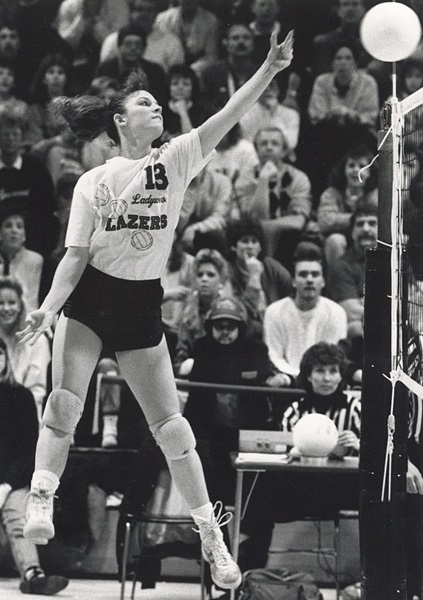 LOCALLY GROWN (1958) – A close working relationship between the MHSAA and the state’s athletic directors has long been key to the administration of school sports in Michigan, and 1958 saw the creation of the Michigan Association of Physical Education and Athletics. Renamed the Michigan Interscholastic Athletic Administrators Association in 1982, the MIAAA still works hand-in-hand with MHSAA staff to foster growth in statewide school athletic programs through local educational leaders.
LOCALLY GROWN (1958) – A close working relationship between the MHSAA and the state’s athletic directors has long been key to the administration of school sports in Michigan, and 1958 saw the creation of the Michigan Association of Physical Education and Athletics. Renamed the Michigan Interscholastic Athletic Administrators Association in 1982, the MIAAA still works hand-in-hand with MHSAA staff to foster growth in statewide school athletic programs through local educational leaders.
GIRLS BEGIN CHAMPIONSHIP RUN (1972) – Women’s athletics gained steam nationally with the passage of Title IX on June 23, 1972. In Michigan, the law only furthered participation growth, as girls had been playing sports as early as 1898. The first Girls Regional, in skiing, took place in 1952. The first MHSAA girls championship also predates Title IX, as a statewide MHSAA Final in gymnastics was held on March 11 of that year – and girls were competing for Finals titles in nine sports by the end of the 1975-76 school year. Competitive Cheer, created by the MHSAA in 1994, continues to be the country’s only variety of cheerleading that meets the federal criteria for sport under Title IX. This trailblazing spirit continues as Michigan consistently ranks among the top 10 states nationally in girls sports participation.
INDEPENDENCE DAY (1972) – The MHSAA’s hard-earned status gained during the mid-1920s again was challenged nearly 50 years later, in 1972. A Michigan Attorney General ruling determined private organizations lacked legal grounds for eligibility matters and that authority for athletics rested with the State Board of Education. A battle for control of school sports made its way to the state legislature, where the House and Senate voted to give the authority to the MHSAA. On April 18, 1972, new Articles of Incorporation officially made the Association a non-profit 501(c)(3), untethered from state government, and affirmed the independence of the MHSAA.
FRIDAY NIGHT LIGHTS (1975) – Despite being a staple of Michigan fall Friday nights for decades, football was the last existing sponsored sport added to the postseason menu, first offering pigskin Finals in 1975. Now a Thanksgiving weekend tradition, the Pontiac Silverdome served as host from 1976-2004, with Detroit’s Ford Field welcoming the event in 2005. The 8-player variety came to the table in 2011, most often showcased at Northern Michigan University’s Superior Dome. Football remains the most-played and most-attended sport among MHSAA offerings.
MAKING – AND ANSWERING – THE CALL (1980) – Officials have been a core constituency of the MHSAA throughout its century-long history. Nearly 10,000 register every year so that students can play the games they love, with the total growing to a high of 12,722 during the 2008-09 school year. Since 1980, the MHSAA has honored officials who reach milestone years of service and annually presents the Norris Award to recognize a veteran official's involvement in mentoring and education.
ON THE COURTS v. IN THE COURTS (1986- 2004) – School sports are the lifeblood of the MHSAA, but occasionally games on our courts have shifted to contests in courts. Victories there have further strengthened the MHSAA’s leadership position for schools. In 1986, it was determined that school sports are a privilege and not a right, with transfer regulations created by member schools and not outside entities. The MHSAA Restitution Rule was upheld in 1991, allowing the association to defend its rules. That same year the Maximum Age and Semester rules also received a positive verdict. The Michigan Supreme Court further stamped the MHSAA’s authority in 2004 in a ruling that helped set legal standards for all private, nonprofit associations in Michigan.
THE FUTURE IS THE PRESENT (1990s and 2000s) – Leadership is passed from generation to generation. The 1990s and 2000s introduced dedicated programs to train and educate student leaders. The first Women In Sports Leadership Conference was held in 1990 and remains the largest and longest-running of its kind. Other student-centered programs, including Sportsmanship Summits, online Captains Courses, the Scholar Athlete Award and the Student Advisory Council, also came to prominence during these years.
SAFE AT HOME (2010s) – As Executive Director John E. “Jack” Roberts entered the final decade of his 32-year tenure, Michigan became a national leader in school sports health and safety initiatives. His “Four Hs” – Health Histories, Heads, Heat and Hearts – yielded programs aimed at a safer environment. This focus included a more comprehensive preparticipation physical exam questionnaire, heightened concussion reporting and care protocols, creation of a heat management policy for practices and contests, and CPR requirements for coaches with a goal of placing AEDs in every school. The MHSAA also provided catastrophic and concussion care insurance free of charge to all student-athletes, which is yet another additional benefit of MHSAA membership.
TELLING OUR STORY (2010s) – For most of the MHSAA’s history, school sports enjoyed comprehensive media coverage at the local and statewide levels. During the early 21st century, a seismic shift in mediums led to instant, electronic coverage with multitudes of entertainment options all vying for attention. MHSAA staff kept pace through enhanced pages on MHSAA.com which featured stories, scores and schedules, and video and audio productions, and promoted this new content through a robust presence on social media. These efforts contribute to ensuring school teams, coaches, administrators, officials and fans are celebrated on the public stage.

CONTINUITY COUNTS (1931-Today) – The strength of any association is its leaders. Continuity is vital, too, transitioning seamlessly from one era to the next. With only five fulltime executive directors in its history, the MHSAA has checked those boxes. That exclusive roster is as follows: Charles E. Forsythe (1931-68), Allen W. Bush (1968-78), Vern L. Norris (1978-86), John E. “Jack” Roberts (1986-2018) and current director Mark Uyl.
ROSTER EXPANSION – The additions of MHSAA Tournament sponsorship for bowling in 2004 and lacrosse in 2005, and a court-mandated switching of eight sports seasons to begin the 2007-08 school year, have produced the current MHSAA sports calendar. A girls individual wrestling bracket was added to the MHSAA Tournament in 2022, while girls field hockey and boys volleyball were added for 2025-26. These may not be the last as the evolution of sports, changing student interests, and a continued focus on participation will drive our future.
Longtime communications director John Johnson said the following upon his recent retirement: “Being the voice, and often having to be the face (of the MHSAA), is something that came with the territory – somebody had to be the storyteller. And while you can be prideful about that, the important thing is still the story. I’ve said it a lot: I was the lucky guy who got the job. Because the story was there to be told.”
Yes, the Association’s missions remain largely unchanged since the winter of 1924. But, it’s the stories of our students, coaches, officials and administrators that always have been – and will continue to be – the motivation for the MHSAA’s efforts.
Previous "Century of School Sports" Spotlights
Dec. 10: On This Day, December 13, We Will Celebrate - Read
Dec. 3: MHSAA Work Guided by Representative Council - Read
Nov. 26: Finals Provide Future Pros Early Ford Field Glory - Read
Nov. 19: Connection at Heart of Coaches Advancement Program - Read
Nov. 12: Good Sports are Winners Then, Now & Always - Read
Nov. 5: MHSAA's Home Sweet Home - Read
Oct. 29: MHSAA Summits Draw Thousands to Promote Sportsmanship - Read
Oct. 23: Cross Country Finals Among MHSAA's Longest Running - Read
Oct. 15: State's Storytellers Share Fall Memories - Read
Oct. 8: Guided by 4 S's of Educational Athletics - Read
Oct. 1: Michigan Sends 10 to National Hall of Fame - Read
Sept. 25: MHSAA Record Books Filled with 1000s of Achievements - Read
Sept. 18: Why Does the MHSAA Have These Rules? - Read
Sept. 10: Special Medals, Patches to Commemorate Special Year - Read
Sept. 4: Fall to Finish with 50th Football Championships - Read
Aug. 28: Let the Celebration Begin - Read
PHOTOS (Top) Clockwise from left: Runners approach the finish line during a race at the 1950 Lower Peninsula Boys Track & Field Finals at Michigan State College. A pair of officials take a photo during the 1977-78 school year. Flint Northern's Tawana McDonald (33) gets a hand up on a shot by Walled Lake Central's Nicole Mullins during the 1996 Girls Basketball Finals. Racers sprint toward the finish during the 2015 Upper Peninsula Girls Track & Field Finals at Kingsford. Detroit Cass Tech's Corey Sadler Jr. (1) stretches for the end zone during the 11-Player Division 1 Final last month. (Middle) Livonia Ladywood's Jenny Belcher tips the ball during her team's 1988 Class A Volleyball Semifinal win over Lake Orion. (Below) Past MHSAA executive directors (from left) Allen W. Bush, Charles E. Forsythe and Vern L. Norris take a photo together. (MHSAA file photos.)
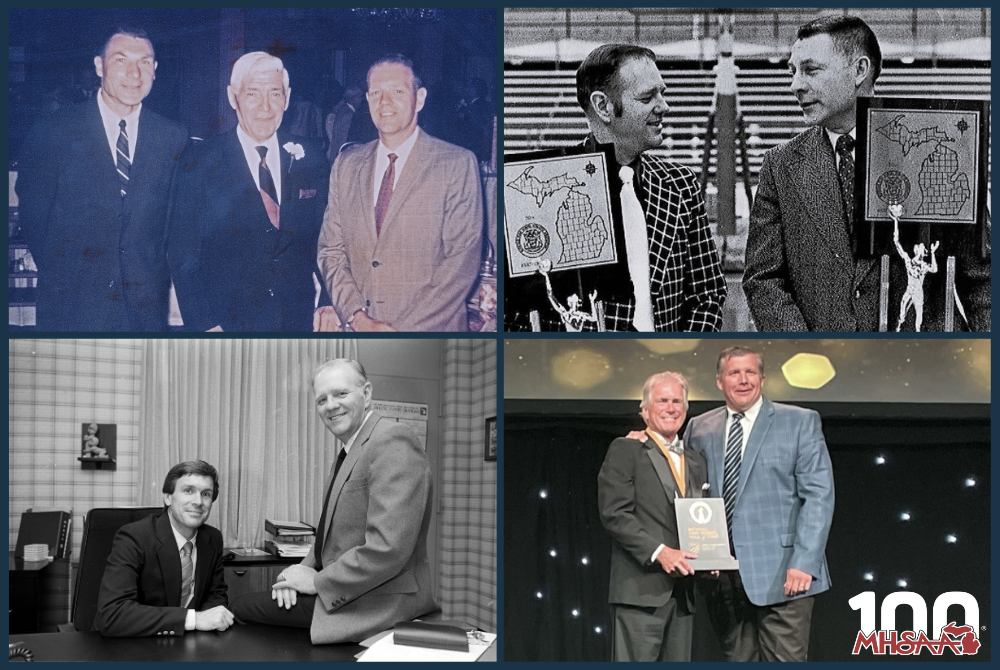
Century of School Sports: Sharp Leadership Synonymous with MHSAA's Success
By
Geoff Kimmerly
MHSAA.com senior editor
April 2, 2025
Just as an organization often will rise and remain successful when there is consistent leadership, so is consistent leadership often a hallmark of a successful organization.
In celebrating a “Century of School Sports,” it’s no stretch to say the Michigan High School Athletic Association has been successful in its continued promotion and administration of educational athletics thanks in part to consistent excellent leadership in the form of only five fulltime executive directors, and two more directors who also took turns leading the organization through some of its most difficult moments.
Two of the MHSAA’s first four executive directors (who are retired, and therefore eligible for the honor) have been inducted into the National High School Hall of Fame by the National Federation of State High School Associations (NFHS). The first fulltime director – Charles E. Forsythe – became Michigan’s first Hall of Fame selection in 1983. The most recently-retired executive director – Jack Roberts – was selected in 2022.
All five executive directors have had monumental impacts on the direction of school sports in Michigan, not just during their time leading the MHSAA but in their various roles leading up to their service at the top of the organization. The below summaries do not come close to stating their full contributions, but merely some of the highlights for which they are most remembered:
Charles E. Forsythe (1931-42, 1945-68)
The MHSAA’s first fulltime executive director literally wrote the book on leadership of school sports programs – “The Administration of High School Athletics” was first published in 1939 and in five more editions as it became a popular college-level textbook. Previously an accomplished athlete, coach, official and athletic director, Forsythe joined the MHSAA staff in 1929 as an assistant director – and during his long tenure leading the office, school sports became part of the lifeblood of communities large and small all over the state. High school membership increased under his leadership, from 600 to 750 schools, and attendance for the MHSAA Boys Basketball Tournament – the headlining high school event of the day – increased from 126,000 for all rounds in 1930 to more than 775,000 at the time of his retirement. While advances were made in football and boys basketball, and in less-visible sports as well – all driving increased participation – the most notable work under Forsythe’s leadership made sports safer for all participants. Many of the most publicized safety initiatives came in football – including significant equipment requirements – but under his leadership the MHSAA in 1940-41 became just the second state nationally to add an accident benefit plan for participants. Forsythe died unexpectedly in December 1968, only a few months after his retirement. He is the namesake for the MHSAA’s annual lifetime achievement award.
Allen W. Bush (1968-78)
The MHSAA’s second fulltime executive director is the namesake for annual awards presented to contributors to school sports whose accomplishments are often behind the scenes and outside of the attention paid to championships and other high achievements. But Bush’s most-known accomplishments have received some of the greatest attention in MHSAA history, and deservedly so. During his tenure, the MHSAA added its first nine championship tournaments in girls sports, created the Football Playoffs and also began awarding Finals championships in baseball, ice hockey and skiing. Bush joined the MHSAA staff in 1960, serving under Forsythe as an assistant and then associate director.
Vern L. Norris (1978-86)
Norris, who died in 2018 at the age of 89, was known especially for his work with coaches and officials. He had coached at three high schools and was a tremendous official himself, having refereed the 1963 Class A Boys Basketball Final. The MHSAA’s annual Vern L. Norris Award honors an official who has been especially active in mentoring and training officials. Norris joined the MHSAA in 1963 and served under both Forsythe and Bush – the latter as associate director – also playing key roles in the creation of girls sports championships during the 1970s and expansion of those opportunities during the 1980s. He also played a significant role in rules-making nationally, contributing on several NFHS committees, and after leaving the MHSAA served as commissioner of the Great Lakes Intercollegiate Athletic Conference.
John E. “Jack” Roberts (1986-2018)
At the time of Roberts’ retirement, he was the nation’s longest-serving executive director – and with accomplishments in his state and nationally that were arguably unmatched. Under his leadership, the MHSAA grew more than 15 percent to more than 1,500 high schools and junior high/middle schools, and the state’s high school sports participation grew 10 percent and annually ranked higher than states with larger high school-aged populations. The MHSAA again became a national leader in health and safety, setting the pace in concussion care, heat management and CPR certification requirements and policies. The MHSAA also took national leads in coaches education and sportsmanship. Three girls sports and two boys sports were added to the tournament lineup during his tenure, as were 8-player football playoffs and an expansion of the 11-player tournament. Roberts had grown up studying the example of his father John, who served as executive director of the Wisconsin Interscholastic Athletic Association for 29 years, and Jack Roberts also served at the NFHS and Fellowship of Christian Athletes before taking over the MHSAA. Few have given their voice to school sports more prevalently: At the time of his retirement, Roberts had spoken in support of educational athletics in nearly every state and five Canadian providences.
Mark Uyl (2018-)
While his tenure as executive director has not yet reached a decade, Uyl already has steered the MHSAA through one of its most challenging times – the COVID-19 pandemic, which led to the cancelation of the end of the Winter 2019-20 season and all sports the ensuing spring. However, under Uyl’s direction – and while other states remained sidelined – MHSAA schools safely returned to activity during the fall of 2020-21, and despite delays completed their championship events for all three seasons that school year. Also a highly-respected game official on a national scale – and past coach and administrator in Michigan – Uyl joined the MHSAA staff in 2004 and has led the way as participation and officials registrations both have continued to rebound from significant decreases during COVID. His tenure also has seen the addition of an Individual Finals division for girls wrestling and the addition of girls field hockey and boys volleyball set for the 2025-26 school year.
Additional notes of recognition must be paid to two more leaders whose contributions came at some of the most delicate times over this successful century:
Julian W. Smith served as interim executive director while Forsythe served in the U.S. Navy during World War II. Smith – who had served on the MHSAA Representative Council for 10 years – received a three-year leave of absence from his role as principal at Battle Creek Lakeview High School and led the MHSAA through an unpredictable wartime era that included the cancelation of statewide championship events in boys basketball and track & field in 1943, but also their return a year later. He continued the promotion of physical fitness that was emphasized as a mission of school sports especially in preparation for service in the military, and during his time as executive director was named to the National Council of Physical Fitness.
Then there is Alden W. “Tommy” Thompson, perhaps the most influential yet forgotten leader in MHSAA history. Thompson had served on the Board of Control for the MHSAA’s predecessor organization, the Michigan Interscholastic Athletic Association (MIAA) and was then appointed as the first state director of interscholastic athletics, under supervision of the state superintendent and Michigan Department of Public Instruction, about three weeks before the official start of the MHSAA in December 1924.
Charles Forsythe credited Thompson with building the MHSAA “from scratch,” and legendary Lansing State Journal sports editor George Alderton praised Thompson for developing “an eligibility code that was positively fool proof,” classifying schools by enrollment to provide equal opportunities for small and large to win championships, organizing the state basketball tournament to make it financially beneficial to schools which in turn allowed them to spend to develop other sports, and giving a statewide stage to some of those less-visible sports including cross country, tennis and golf. Alderton wrote, “Tommy was the fellow who paved the way, ironed out the humps and gave the machine a push before the motor of popular interest began running.”
Forsythe served as Thompson’s assistant for two years before taking over as state director of athletics in 1931 as Thompson became the state director of physical and health education. However, both would lose their employment with the state’s department of public instruction in 1933 due to budgetary cuts – Thompson, to go on to several more pursuits in athletics, but Forsythe to remain as state director of athletics but now paid fully by the MHSAA, making him officially the association’s first fulltime executive director.
Previous "Century of School Sports" Spotlights
March 25: Athletic Directors Indispensable to Mission of School Sports - Read
March 18: 2025 Finals Begin Next Half-Century of Girls Hoops Championships - Read
March 11: Boys Basketball's Best 1st to Earn MHSAA Finals Titles - Read
March 5: Everything We Do Begins with Participation - Read
Feb. 25: Slogans & Logos Remain Unforgettable Parts of MHSAA History - Read
Feb. 19: MHSAA Tickets Continue to Provide Fan-Friendly Value - Read
Feb. 11: We Recognize Those Who Make Our Games Go - Read
Feb. 4: WISL Conference Continues to Inspire Aspiring Leaders - Read
Jan. 28: Michigan's National Impact Begins at NFHS' Start - Read
Jan. 21: Awards Celebrate Well-Rounded Educational Experience - Read
Jan. 14: Predecessors Laid Foundation for MHSAA's Formation - Read
Jan. 9: MHSAA Blazes Trail Into Cyberspace - Read
Dec. 31: State's Storytellers Share Winter Memories - Read
Dec. 17: MHSAA Over Time - Read
Dec. 10: On This Day, December 13, We Will Celebrate - Read
Dec. 3: MHSAA Work Guided by Representative Council - Read
Nov. 26: Finals Provide Future Pros Early Ford Field Glory - Read
Nov. 19: Connection at Heart of Coaches Advancement Program - Read
Nov. 12: Good Sports are Winners Then, Now & Always - Read
Nov. 5: MHSAA's Home Sweet Home - Read
Oct. 29: MHSAA Summits Draw Thousands to Promote Sportsmanship - Read
Oct. 23: Cross Country Finals Among MHSAA's Longest Running - Read
Oct. 15: State's Storytellers Share Fall Memories - Read
Oct. 8: Guided by 4 S's of Educational Athletics - Read
Oct. 1: Michigan Sends 10 to National Hall of Fame - Read
Sept. 25: MHSAA Record Books Filled with 1000s of Achievements - Read
Sept. 18: Why Does the MHSAA Have These Rules? - Read
Sept. 10: Special Medals, Patches to Commemorate Special Year - Read
Sept. 4: Fall to Finish with 50th Football Championships - Read
Aug. 28: Let the Celebration Begin - Read
PHOTOS Clockwise from top left: (1) Left to right, Al Bush, Charles Forsythe and Vern Norris take a photo together. (2) Norris, left, and Bush hold up Finals trophies. (3) Jack Roberts, left, stands with Mark Uyl during Roberts' induction into the National High School Hall of Fame. (4) Roberts, left, and Norris sit for a photo as Roberts began his tenure after Norris retired. (MHSAA file photos.)
